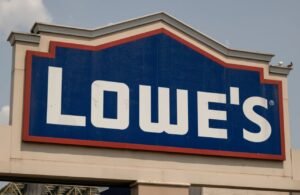
Lowe’s vs. Home Depot – A Competitive Rivalry Reshaped by Acquisition
In the world of home improvement retail, two names have long dominated the landscape: Lowe’s and Home Depot. These retail giants have built massive footprints across the U.S., catering to homeowners, DIYers, and professional contractors alike. While Home Depot has traditionally held the edge in market share and profitability, Lowe’s is now making aggressive moves—particularly through strategic acquisitions—to catch up.
With a recent acquisition move valued at $1.3 billion, Lowe’s is clearly signaling that it’s no longer satisfied with playing second fiddle. This deal could be a turning point in the long-standing rivalry, bringing new dimensions to the battle for dominance in the home improvement space.
Understanding Lowe’s Strategic Acquisition Plan
Over the past decade, Lowe’s has steadily transformed its business model—refining its in-store experience, investing in e-commerce, and improving logistics. But now, it’s entering a more aggressive phase with acquisitions that enhance its supply chain and pro-customer services.
This shift is more than just a retail expansion; it’s a tactical approach to compete directly with Home Depot, which has long been favored by professional builders and contractors due to its inventory depth and contractor-first policies.
Lowe’s latest acquisition targets distribution and fulfillment efficiency, a core area where Home Depot previously held a clear lead.
Lowe’s $1.3 Billion Investment to Challenge Home Depot
In a significant move, Lowe’s recently announced a $1.3 billion acquisition aimed at improving its supply chain infrastructure. This deal is being viewed by analysts as a bold step toward catching up with Home Depot’s logistical and operational advantages.
To get a full breakdown of the acquisition and what it means for the competitive landscape, check out the detailed coverage here:
👉 Lowe’s Makes $1.3 Billion Move to Compete with Home Depot – Men’s Journal
This move highlights Lowe’s intent to scale faster, serve pro customers better, and optimize back-end systems that impact product availability, speed, and customer satisfaction.
As this acquisition rolls out, industry insiders expect increased pricing competition, faster shipping, and improved inventory control across Lowe’s network—ultimately benefiting customers and contractors alike.
Comparing Lowe’s and Home Depot in 2025
Let’s take a snapshot look at how the two companies stack up currently:
| Feature | Lowe’s | Home Depot |
|---|---|---|
| Total Stores (U.S.) | ~1,700 | ~2,300 |
| Online Sales Growth | Rapid growth, improving UX | More established, robust |
| Pro Customer Focus | Growing aggressively | Long-time leader |
| Recent Acquisition | $1.3B in logistics expansion | Earlier investments in tech |
| Global Presence | Primarily U.S. and Canada | U.S., Canada, Mexico |
While Home Depot still holds a lead in several key metrics, Lowe’s is fast narrowing the gap—especially in logistics, fulfillment, and professional services.
Why This Acquisition Could Change the Game
There are several strategic advantages Lowe’s is aiming to secure with this acquisition:
-
Boosting Delivery Speed
A stronger supply chain means faster restocking and home deliveries, particularly in underserved regions. -
Winning Over Pro Customers
Pro customers (contractors, builders, etc.) spend significantly more per visit. Serving this segment better can massively boost revenue. -
Reducing Dependence on Third Parties
By acquiring key logistics operations, Lowe’s can cut costs and regain control over distribution and fulfillment timelines. -
Improving Omnichannel Experience
Customers expect seamless transitions between online and in-store experiences. This investment directly supports that demand.
What This Means for Consumers and the Industry
For the average consumer, this acquisition means better availability, faster service, and potentially lower prices as competition heats up. For the industry, it signals that Lowe’s is done playing catch-up and is ready to stand shoulder-to-shoulder with Home Depot on every front.
Professionals in the construction and home renovation industries may find themselves reassessing supplier preferences as Lowe’s enhances its pro services, delivery capabilities, and bulk pricing programs.
This acquisition could also trigger a new wave of innovation and infrastructure investments across the entire home improvement sector.
The Bigger Picture: Retail Giants Reinventing Themselves
The rivalry between Lowe’s and Home Depot is about more than store count or quarterly earnings. It represents a larger trend of retail reinvention—where digital transformation, logistics optimization, and customer experience reign supreme.
As both brands move toward more sophisticated tech stacks and supply chains, customers can expect enhanced features like:
-
Same-day and next-day delivery
-
Automated inventory restocking
-
Personalized online recommendations
-
Expanded private-label product lines
This competitive energy ensures continuous improvements, making both companies sharper and more responsive to market needs.
Final Thoughts: Lowe’s Is Playing Offense
For years, Lowe’s was seen as the underdog in the home improvement retail race. But with strategic leadership, heavy investments, and now a billion-dollar acquisition, Lowe’s is stepping onto the offensive.
While Home Depot still holds many advantages, Lowe’s is no longer lagging behind—it’s sprinting to meet and potentially surpass its rival in key areas.
Keep an eye on how this acquisition unfolds and how it reshapes the shopping experience for millions of consumers across North America.
And for more updates on industry trends, strategic business moves, and leadership insights, follow our latest posts right here on Echorankit.
Frequently Asked Questions (FAQs)
Q1: Did Lowe’s really acquire another company for $1.3 billion?
Yes. This recent acquisition is part of a strategic plan to strengthen logistics and compete more directly with Home Depot.
Q2: Will this affect Lowe’s prices or delivery times?
Very likely. The acquisition is expected to improve delivery speed, inventory accuracy, and possibly lead to more competitive pricing.
Q3: Which company is better—Lowe’s or Home Depot?
Each has its strengths. Home Depot has long dominated the contractor market, while Lowe’s is catching up with improvements in tech, logistics, and service.

